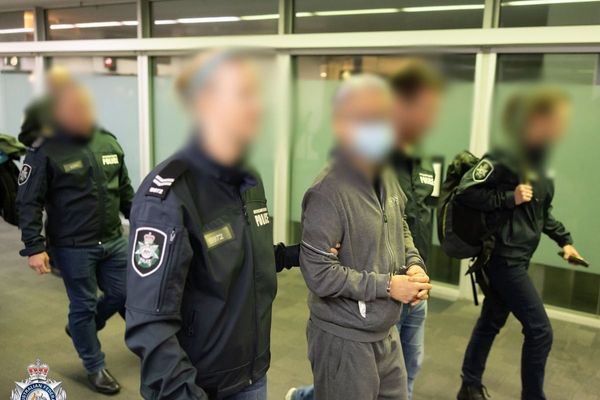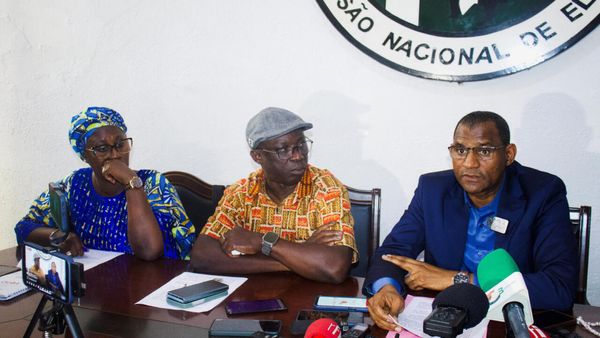
Across 3,000 pages about the 32 deaths publicly examined by a New South Wales special commission of inquiry into LGBTQ+ hate crimes, four cases stood out. In his final report, released just days before Christmas, the commissioner, Justice John Sackar, found that police failed to properly investigate potential gay hate crimes and must rebuild trust with the LGBTQ+ community.
But there were four deaths examined by the inquiry that should be referred by NSW police to the coroner for a fresh inquest, the report found, because of the evidence that had been uncovered.
This is what we know about the four cases, based on Sackar’s final report.
Paul Edward Rath

Paul Rath went missing in June 1977, on one of the darkest nights of the year. His body was found at the base of a headland – on North Head, south of Shelly Beach in Manly – the following morning.
Investigating police at the time did not take long to conclude that the death was accidental.
But there were serious flaws in their work, Sackar found, including not considering that Rath had been found near a known “beat”.
Rath, 27, was found dressed in a suit, the trousers of which were down at mid-thigh level, exposing his underpants and upper thighs.
One of his shoes and a set of rosary beads that belonged to him were found on the rocks nearby.
A handwritten note signed by Rath was found in his coat pocket: “God loves little children. Children love God with your whole heart and whole soul. Let God’s light shine upon you from day to day. Let your little hearts become a replica of His. Place your faith and love in his sacred heart. And he will find a special place in heaven where you will be with Him for eternity.”
Rath was the oldest of eight children, raised in a Catholic family, and lived at home with his parents in Pittwater Road, Manly.
Sackar found that investigating police may have not properly considered suicide as a possible cause of death because of Rath’s faith and because his parents had also insisted he would not have killed himself.
But the inquiry found that not only had he confided in a brother that he was gay, but the brother had also previously told police that Rath seemed happy the last night he saw him, when in reality he “felt like something was wrong” and “that Paul just wasn’t right”.
Rath had schizophrenia and was taking medication until the time of his death, but there was no evidence he had been suicidal.
One of his sisters also provided a statement to the inquiry that she was concerned a former boyfriend may have been involved in Rath’s death.
Sackar found that there was a lack of evidence to determine whether the death was due to an accident, suicide or a homicide.
He said this was in part because of failures in the initial police investigation, including in examining stains, that may have been blood, on Rath’s clothing, which could have been caused by an injury sustained before Rath fell from the cliff.
These failures included that some police officers “gave little or no attention to the possibility that they may have been homicides motivated by LGBTIQ bias … where the death may have been too readily assumed to have been an accident or suicide”.
“It is undoubtedly the case that assaults on gay men and beat users, or those assumed to be gay and/or beat users, occurred in various parts of the northern beaches of Sydney during the 1970s,” Sackar said.
Richard Slater

Richard Slater was bashed in a public toilet block in Newcastle in December 1980 and died several days later. Jeffrey Miller later made admissions to causing the death and was charged with murder, but the case was withdrawn before trial in March 1983.
Miller died three years later.
Slater, 69, had been robbed of about $30. According to associates of Miller, he would regularly rob men in known “beats”, sometimes after having sex with them. He also told the associates, according to evidence they later provided to police, that Miller had threatened to harm his friends if they told anyone what he had done.
Police were told that Miller had said to one person, on either the day of the bashing or the next, that “you don’t want to open your mouth or you will end up like the guy in the toilet”.
Records obtained by the inquiry appeared to suggest that Miller had been charged with assaulting a homosexual man at a local nightclub.
Sackar found that while Miller’s apparent admissions to bashing Slater were “very significant”, they were typed out and made before the standard practice of electronically recording such admissions. He disavowed these admissions in subsequent statements.
The inquiry could find no record of why the case against Miller was dropped.
Sackar found that while there was “substantial evidence” that Miller was responsible for the death, it should be referred to a new inquest because of other “deficiencies”.
“In the absence of clear evidence as to the reason for [dropping the murder case], I cannot fairly evaluate the evidence implicating Mr Miller and any potential weaknesses relating to it,” he said.
“The loss of records in this matter, by various government entities, is therefore particularly frustrating.”
Carl Gregory Stockton

Carl Gregory Stockton, 52, died in November 1996 as a result of head injuries suffered a few days earlier near Bar Cleveland in Redfern.
He worked as a train driver, was passionate about cars and owned a Rolls-Royce.
Stockton had been the victim of assaults, which he had said had occurred because of his sexuality, telling one friend about a decade earlier words to the effect of: “I am a homosexual, it happens occasionally.”
It remains unclear how he sustained the injuries that caused his death, but Sackar heard that police and counsel assisting the commission agreed that a finding could be made that they were due to an assault.
Previous inquiries into the death indicated that Stockton may have been hit by a car or sustained his injuries in a fall.
There was not enough evidence, however, to find that Stockton was assaulted because of his sexuality. This was despite a suggestion that “anti-gay” taunts had been levelled at him on the night he died and that other patrons of the bar suspected a group of Caucasian men had been bashing some of the drinkers there.
Sackar found that police had once again been unable to account for exhibits relating to the death.
Scott Stuart Miller

Scott Stuart Miller was found dead in Darling Harbour, within the compound of the stevedores business Patricks, in March 1997.
He was straight but attended the Sydney Gay and Lesbian Mardi Gras Parade on Oxford Street the night before his body was found, meaning the death was investigated as part of the inquiry.
But Sackar found Miller died as a result of multiple injuries sustained in a fall from height and that it was likely the fall was accidental, meaning that on the evidence available to the inquiry there was no reason to suspect that LGBTQ+ bias was a factor in the death.
Miller was found to have a high blood alcohol concentration after his death, which may have contributed to “disorientation and poor judgment”. He could have become disoriented while looking for the casino and climbed a fence into a reserve shortly before his death, Sackar found.
The family made a submission to the inquiry that “there are still some issues in conclusively ruling that Scott’s death was a result of accidental causes and [we] feel that they will never know with certainty exactly what happened on the night of his death”.
Sackar said he acknowledged “that it will never be known with certainty the exact details of what happened on the night of Mr Miller’s death, and that there are some details which are ultimately left to speculation”.
The police investigation into the death was again found wanting by Sackar, who said the force should acknowledge their shortcomings to Miller’s family.







